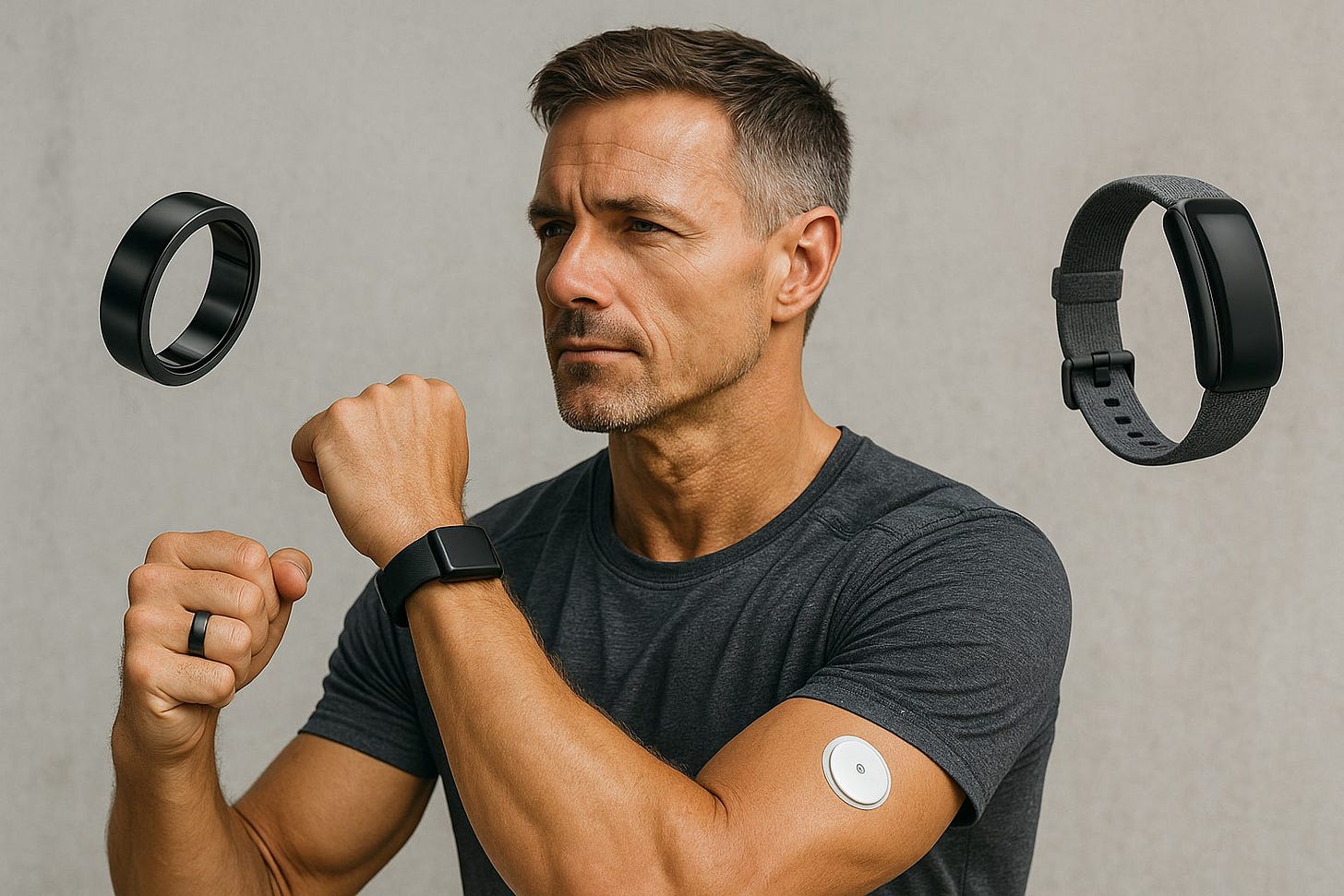6 Wearables That Track Your Biological Age (and How To Use Them Wisely)
From smart rings to AI-powered algorithms—discover how to peek into your "real" age and steer the journey forward with savvy.
Imagine having a mirror—not just showing your reflection, but whispering, "You're actually 38, not 42." That's the siren call of biological age trackers. These are not your run‑of‑the‑mill fitness gadgets. They're insidious little time‑scrying devices that try to quantify how fast your body is ticking... compared to your calendar birthday. I think it's downright fascinating. And yes, a little unsettling too 😉
Let's embark on a journey through six standout wearables (and their platforms) that promise to estimate your biological age. We'll explore what makes them tick, how much we can trust them (hint: vigilance required), and how you might—maybe, just maybe—use them wisely.
1. Whoop 5.0: Meet Your "Whoop Age" and "Pace of Aging"
Whoop's armband now dishes out a "Whoop Age" (how old your body feels based on long‑term recovery and strain) plus a "Pace of Aging" (your 30‑day snapshot). I find that delightfully cheeky—like your body's sending postcards from the future about how you're holding up. Reviewers love how it nudges awareness, though the $199–$359 annual cost whispers "serious commitment".
Use wisely? Let Whoop Age sit back and reflect slow‑burn lifestyle habits—no daily panic. Then, let Pace of Aging react more swiftly to tweaks: sleep more, stress less, see if that pace steadies. You're wielding data—not being used by it.
2. ŌURA Ring: Sleek Metrics, Cardiovascular Age, Stealth Style
Tiny, stylish, and comfortably forgettable once on your finger—the ŌURA Ring is queen of subtle tracking. It gauges sleep, stress, resilience... and even hints at your "cardiovascular age". Wearing it is like having a wise, unobtrusive older sibling who quietly tells you how you're doing.
Use wisely? Let it inform, not dominate. Check your trends weekly, yes—but don't lose sleep over a blip. Wear consistently, absorb insights, adjust habits that nudge your heart health in the right direction.
3. Ultrahuman's "Ultra Age": Brain, Pulse, Blood in One Glance
Ultrahuman distills your physiology into a single "Ultra Age"—a composite of Brain Age (glymphatic clearance), Pulse Age, and Blood Age. It's elegant, holistic, and a little theatrical. Like a tri‑wizard tournament of aging metrics.
Use wisely? Treat it like a compass, not a verdict. If your Ultra Age shifts after better sleep or diet tweaks—cheers. If it spikes during a burned‑out week—take pause, rest, and regroup. Listen to that signal.
4. CosinorAge (Open-Source): Your Biological Age, Code-Friendly
Here's something for the tinkerers and privacy hawks: CosinorAge is an open‑source Python package (and companion web calculator) that estimates biological age from your wearable's sleep and activity rhythms. It's transparent, reproducible—and mad scientist enough to flirt with brilliance.
Use wisely? If you're data‑savvy, feed your wearable data into CosinorAge. Explore how your circadian consistency maps to aging. Tinker. If you're not into code—just know there are platforms eager to democratize this science.
5. Humanity's Biological Age (Emerging AI Coach)
Humanity, a startup often flying under the radar, uses AI to estimate your biological age within about three years of accuracy, based on movement and heart‑rate data. They don't pretend to foretell mortality—they focus on the trend.
Use wisely? Let it be your behavior lab. Watch whether your "age" drifts forward or backward with lifestyle shifts. But stay skeptical. There's yet to be proven connection with actual health outcomes.
6. Research-Grade Wearables & Sweat Sensors
We're now on lab‑coat territory. Several research teams are exploring wearables and sweat‑based sensors to estimate biological aging—tracking everything from circadian rhythms to molecular markers in sweat. Then there's "MoveAge," a model using accelerometer data to predict aging patterns—with links to healthspan ℹ.
Use wisely? Not consumer toys yet—but oh, the promise. Watch these breakthroughs—they're the future of truly personalized age tracking. For now, treat them as fascinating horizons.
Why It Matters (And Where to Be Cautious)
These wearables are not magic mirrors. Most are still experimental, even if sophisticated. Many studies caution that pet biological‑age metrics lack strong ties to mortality or disease—yet. They're provocative signals, not clinical diagnoses.
But that's exactly the point. If you use them as behavioral nudges—nudging better sleep, smarter recovery, stress awareness—they can probably help you shift your aging trajectory. Just don't let them hijack your life.
Also noted: 7 Wearables That Help You Track Aging—And Actually Do Something About It
TL;DR (Because I know you're skimming 😉)
Whoop 5.0 → "Whoop Age" & "Pace of Aging"; use as long‑term trend + short‑term feedback.
ŌURA Ring → sleek, sleep‑centric, cardiovascular age; check trends—don't obsess.
Ultra Age (Ultrahuman) → three‑part age metric; use for holistic insight.
CosinorAge → open‑source tool for circadian-based age tracking; nerdy and transparent.
Humanity AI → AI‑based biological age near ±3 years; watch trends, stay skeptical.
Sweat & research wearables → lab‑grade signals; exciting, but future‑focused.
Final Thoughts
Using a biological age wearable might feel like peeking behind the curtain of your future self. And honestly? That's a powerful feeling. Just remember: you're holding the remote, not the other way around. Use these tools thoughtfully. Let them guide—not define—you.
Care enough to question. Smile at the data. Make better choices. And, of course, enjoy the sly thrill of knowing more.


